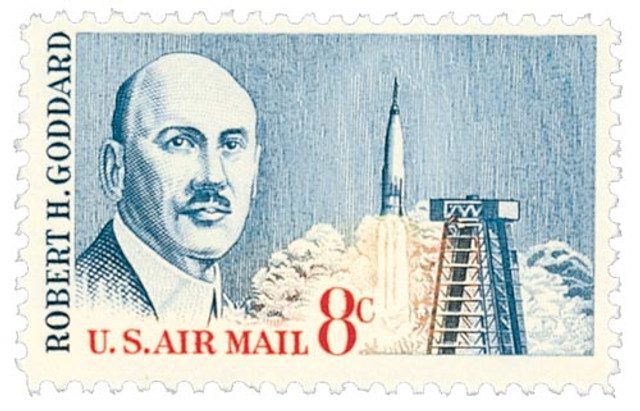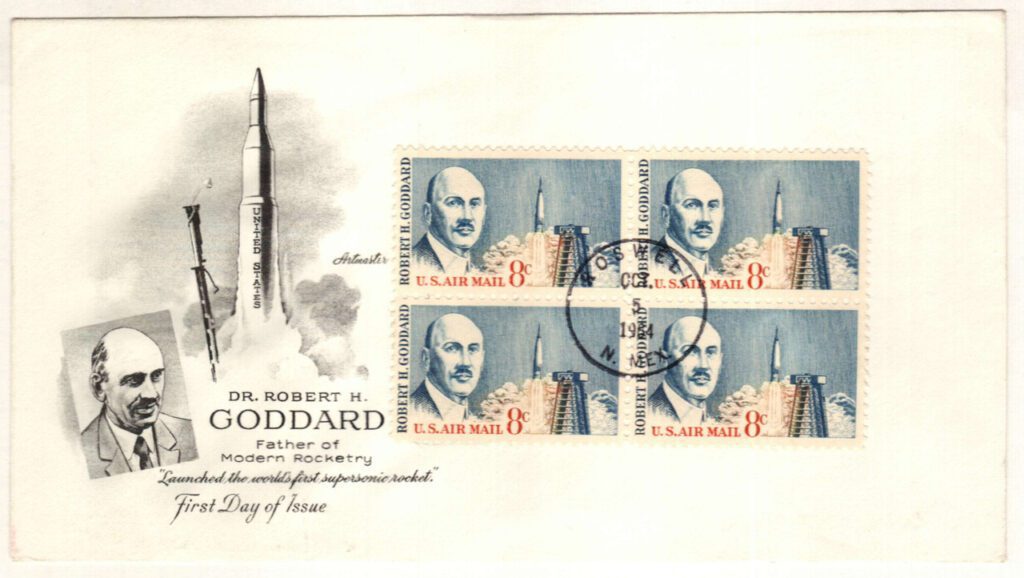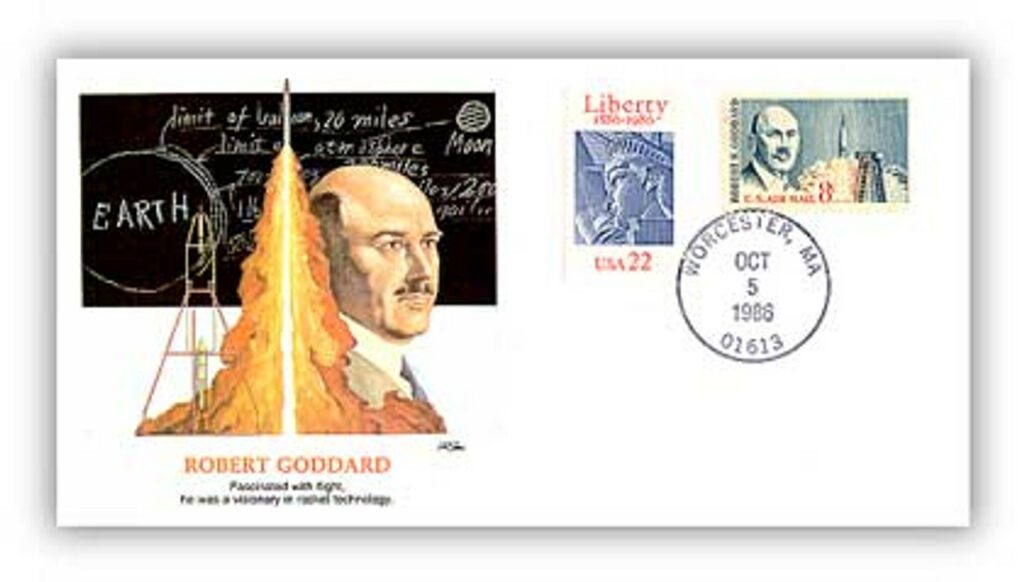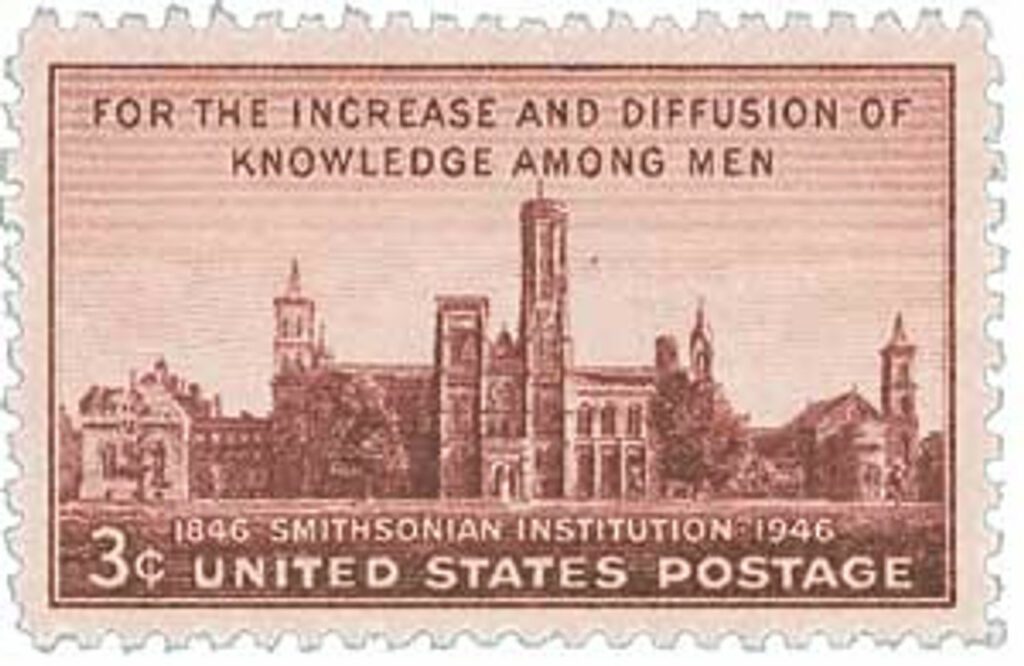On March 16, 1926, Robert H. Goddard launched his first liquid-fueled rocket in Auburn, Massachusetts. Though his work went largely unrecognized during his lifetime, today he’s known as the father modern rocketry.
Born in 1882 in Worcester, Massachusetts, Goddard was fascinated by science at an early age. Despite his mother’s warnings that he could “go sailing away and might not be able to come back,” Goddard’s father encouraged his curiosity, buying him a telescope, microscope, and subscription to Scientific American. He was fascinated with flight, especially kites and balloons. From this early age, he got himself in the habit of keeping detailed diaries about his experiments, a practice he carried through to his adulthood.
After reading H.G. Wells’s The War of the Worlds, Goddard became very interested in space. On October 19, 1899, while climbing atop a cherry tree to cut off dead limbs, he looked to the sky and imagined traveling to Mars. He later said, “I was a different boy when I descended the tree… Existence at last seemed very purposive.” From that day on, he celebrated October 19 as “Anniversary Day” – the day of his “greatest inspiration.”
Goddard graduated from high school as valedictorian and went on to study at Clark University, where he earned his Ph.D. He published his first articles and received his first patents while still a student. Many of his experiments focused on space flight, but he didn’t tell his peers that, as they didn’t consider it real science at that time.
In 1907, Goddard built a rocket that was powered by gunpowder. Though the rocket created a lot of smoke and confusion, his professors at Worcester Polytechnic were intrigued and encouraged his research. By 1914, he had two patents – one for a liquid-fueled rocket and one for a two- or three-stage rocket that used solid fuel. These were new alternatives to gunpowder which had previously been used for propulsion.
In 1915, Goddard began to develop his theories on space flight. He believed that a rocket wouldn’t need to push against air to fly, theorizing that rocket engines could still produce thrust in the vacuum of space. At the time, few people believed in his research. He initially used his own money to pay for his experiments. Eventually the Smithsonian provided some funding and Goddard developed the mathematical theories for rocket propulsion.
The Smithsonian published one of Goddard’s papers in 1920 that stated that rockets could one day go to the Moon. His theories were quickly denounced by the press. However, Goddard responded that, “Every vision is a joke until the first man accomplishes it; once realized, it becomes commonplace.”

On March 16, 1926, Goddard was ready to test his theories. He launched the world’s first liquid-propelled rocket in Auburn, Massachusetts. The fuel burned for 20 seconds before the rocket lifted off the launch rack. The rocket reached a height of about 41 feet and traveled about 184 feet. Goddard, his wife, and a few assistants were the only people present that day. The now momentous event wasn’t covered by any newspapers at the time. In fact, Goddard kept it secret for a decade. He didn’t want anyone to steal his ideas and he didn’t want to deal with the critical press.
Goddard then moved to Roswell, New Mexico, where he continued to build larger and larger rockets. He eventually launched another 34 rockets that reached altitudes of 1.62 miles and speeds of 550 miles per hour. By the time he died in 1945, Goddard had 214 patents in rocketry, but was largely unrecognized for his work. Two decades later, as America raced to space American rocket scientists finally acknowledged Goddard’s important work. The newspaper that had criticized him printed a correction to their 1920 article stating, “it is now definitely established that a rocket can function in a vacuum as well as in an atmosphere. The Times regrets the error.” Today Goddard is known as the father modern rocketry and has received a Congressional Gold Medal. A space flight center in Maryland, several schools, and a crater on the moon have been named in his honor.
View photos of Goddard’s rocket.
Find lots more space stamps here.
| FREE printable This Day in History album pages Download a PDF of today’s article. Get a binder or other supplies to create your This Day in History album. |
Discover what else happened on This Day in History.





Always interesting, thanks for the quick fix to the back button!
I have been to Auburn Massachusetts many times. There is a plaque honoring Goddard on the side of I-290. Thanks Mystic for today’s article.
Great trivia for my AirForce cadets.
Thanks
Far out !!!
Far out!!!